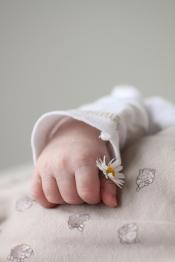Aggregated News

Many more three-parent babies will soon be on their way. A clinic in Mexico is planning to use the technique in 20 pregnancies in the first half of 2017, according to its medical director Alejandro Chavez-Badiola.
The first baby to be born using such a technique to prevent passing on genetic disease was born this year. Test results yet to be published have revealed that the baby boy is perfectly healthy, New Scientist has been exclusively told.
The idea is that the technique, called mitochondrial replacement, avoids harmful mitochondrial mutations passing from the mother to her children. It works by removing the nucleus from a mother’s egg and inserting it into a donor egg, which has its own nucleus removed. The egg is then fertilised with the father’s sperm.
.
In this way, an embryo gets chromosomes from its mother and father, but the DNA in the mitochondria comes from the donor. The hope is this should enable children not to inherit harmful mitochondrial mutations from their mothers, but will mean that they have genetic material from three...



